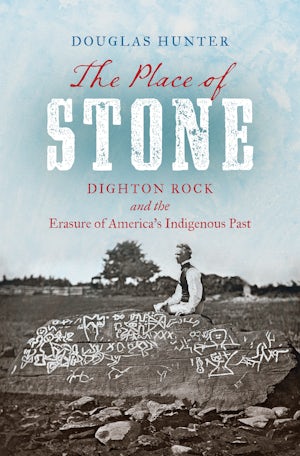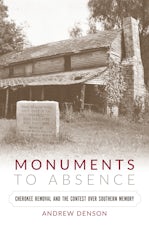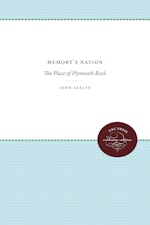The Place of Stone
Dighton Rock and the Erasure of America's Indigenous Past
By Douglas Hunter
342 pp., 6.125 x 9.25, 12 halftones, 1 map, notes, bibl., index
-
Paperback ISBN: 978-1-4696-6873-4
Published: November 2021 -
E-book EPUB ISBN: 978-1-4696-3441-8
Published: August 2017 -
E-book PDF ISBN: 979-8-8908-5320-2
Published: August 2017
Buy this Book
- Paperback $39.95
- E-Book $19.99
For Professors:
Free E-Exam Copies
In this fascinating story rich in personalities and memorable characters, Douglas Hunter uses Dighton Rock to reveal the long, complex history of colonization, American archaeology, and the conceptualization of Indigenous people. Hunter argues that misinterpretations of the rock’s markings share common motivations and have erased Indigenous people not only from their own history but from the landscape. He shows how Dighton Rock for centuries drove ideas about the original peopling of the Americas, including Bering Strait migration scenarios and the identity of the "Mound Builders." He argues the debates over Dighton Rock have served to answer two questions: Who belongs in America, and to whom does America belong?
About the Author
An award-winning journalist and historian, Douglas Hunter’s previous books include Half Moon and God’s Mercies.
For more information about Douglas Hunter, visit
the
Author
Page.
Reviews
"Hunter's deeply researched, heavily detailed study raises fascinating questions about white Americans' understandings of Native American culture as well as their own sense of identity and nation."—Publishers Weekly, starred review
“Recommended.”—Choice
“The Place of Stone would be useful in public history, Native American history, or history of archaeology courses. Given its regional emphasis, the book will be especially useful for instructors in New England.”—The Journal of American History
“The Place of Stone may finally set the public history straight.”—American Historical Review
“A richly detailed and researched account of this seemingly enigmatic rock that will appeal to readers fascinated with the minutiae and ironies of antiquarian scholarship.”—Winterthur Portfolio
“Deeply researched and fascinating to explore. . . . The rich array of books and archival sources provide a jumping off place for further investigation into efforts made at erasing Native place and speak volumes about the importance of acknowledging Native presence in relation to the rock as well as, more generally, the space of what we call New England.”—Historical Journal of Massachusetts



